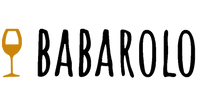At the request and following the guidelines of the Barolo&Barbaresco Protection Consortium, the Barolo wine area was defined by the Ministry of Agriculture in 1966. The area immediately obtained the DOC classification and im In 1984 the highest predicate level DOCG followed. Part of the guidelines were and still are very strict cultivation and production conditions that must be observed by the wineries within the Barolo area.
 The area is made up of eleven different municipalities. However, more than 90% of the total Barolo production comes from just 6 municipalities, universally considered to be the heartland of Barolo to be viewed as. These communities are in order of production volume:
The area is made up of eleven different municipalities. However, more than 90% of the total Barolo production comes from just 6 municipalities, universally considered to be the heartland of Barolo to be viewed as. These communities are in order of production volume:
La Morra, Monforte D'Alba, Serralunga D'Alba, Barolo, Castiglione Falletto and Novello.
Until the 1980s, it was common for Barolo winemakers to sell their grapes to mass producers, who then made and marketed the wines. These wines were blended from the entire wine-growing region. The year 1961 was a milestone in the history of Barolo, when the first winegrowers began to produce their own vineyard wines.
In the past there have always been attempts to introduce a legally defined layer cartography. But it took until 2010 before an official layer designation became a reality. Unlike in Burgundy, for example, these designations are not a classification and do not say anything about the quality of the layers, but they stand side by side on an equal footing. However, there is an unofficial hierarchy because most of the names of the vineyards have a historical background and there is a clear knowledge of the quality potential of these crus.
Today, the majority of Barolo wines are single vineyard wines and there are a total of 181 vineyard designations recognized by the consortium, the so-called MGA (Supplementary Geographical Indications). The producers can put the name on the bottle label of the location, also called Cru, and bear the name of the vineyard, are not obliged to do so. The top crus include Cannubi, Brunate, Margheria, Monprivato, Francia, Rocche dell' Annunziata, Villero and Vignarionda. In 2013, a total of 13 million bottles of Barolo were produced on 1966 hectares of vineyards by 577 wineries.









